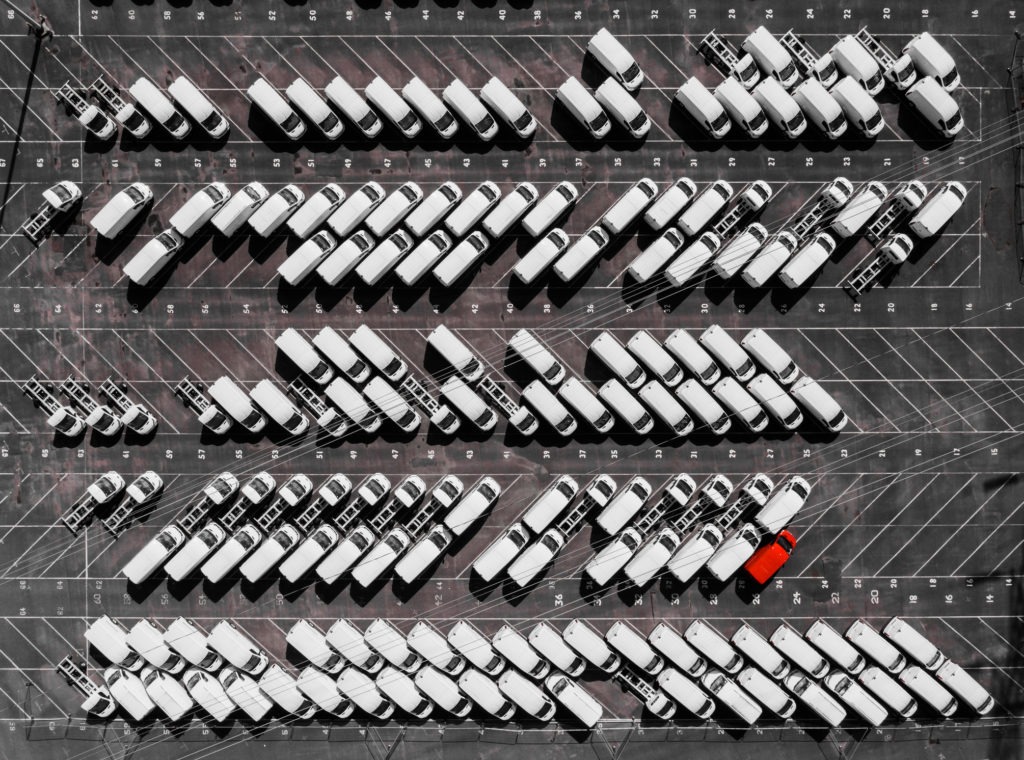Heavy declines but signs of promise for Europe’s light-commercial vehicle market
27 July 2022

The latest light-commercial vehicle (LCV) figures from the European Automobile Manufacturers’ Association (ACEA) show another month of strong year-on-year declines in June. However, an adjustment for working days suggests that the market fared better than it did in May.
According to ACEA, LCV registrations fell 26.8% last month, with 115,080 units sold. With one less working day in the month in most EU countries, on an adjusted basis the decline is only 25%, markedly better than the adjusted 29% decline in May, which was a deterioration from the 26% downturn in April.
The figures therefore suggest that while there is some way to go for the industry to get back on an even footing, recovery is picking up again following the stall in May.
This follows the same pattern as EU new-car registrations last month, with a stronger decline in May and improvement in June. The LCV market, just like the passenger-car sector, is struggling with a number of supply issues. Chief amongst these is a shortage of semiconductors, while supplies of other components have been impacted by the Ukraine war and COVID-19 lockdowns in China.
Rising fuel prices have also played their part in the decline of the market. As businesses struggle to remain profitable, many will look to keep their fleets for longer, rather than spend out on new models. A lack of interest in electric vans, due to business requirements and questions about infrastructure, means that while the passenger-car market may be able to attract buyers through a reduction in fuelling costs, the LCV market will struggle to do so.
Market weakness continues across Europe
The entire European market, including the UK and European Free Trade Association (EFTA) countries of Iceland, Norway, and Switzerland, saw an adjusted decline of 23% last month. The figures were helped by the UK, which reported a fall of 23% according to ACEA. As in the country’s passenger car market, the Queen’s Platinum Jubilee meant two fewer working days, so the adjusted 15% decline helped to stabilise the overall European figures.
The key European markets all contributed to registration losses in June. Spain was the hardest hit, with its market dropping 32.4%. The country has been struggling with its LCV registrations all year, and the latest figures mean its market is 35.4% down year-to-date.
Germany also suffered in June, with LCV numbers falling 31.6%, while Italy and France posted 25.3% and 21.9% losses respectively. These losses have led to a total EU market contraction of 23.9% between January and June 2022, with Germany down 22.1% across the year, and France faring worse, with a 24.4% drop. Despite a difficult month in June, Italy is faring best of the EU’s top markets, with LCV registrations only down 11.6% compared to the first half of 2021.
Austria continues to lead the declines in Europe, with LCV registrations down 77.6% in June. This means that 7,023 fewer units were sold last month, and overall, the 19,531 drop across the year is a 63.4% contraction. The next worst performing market so far this year is Spain, followed by Estonia, although its 31.2% decline for the first half of 2022 equates to just 916 LCVs.
Four countries recorded growth in June. Slovakia, Lithuania, Greece, and Latvia increased registrations by 54.5%, 20.3%, 17.8% and 2.5% respectively. Slovakia’s LCV market is the best in the EU in terms of growth, up by 10.9% in the first six months of the year.
LCVs hinder wider commercial-vehicle registrations
The wider commercial-vehicle (CV) market posted a 22.5% decline in the EU during June, although adjusted for working days, this is closer to a 20% drop. The LCV market was the big factor in this decline, as it makes up around 80% of registrations in the market. So far this year, the overall CV market is down 20.3%.
The total figures were helped by the medium and heavy commercial-vehicle (MHCV) market, featuring vehicles with a gross vehicle weight (GVW) of over 3.5 tonnes, which grew by 2.2% to 26,736 units in June. Of the four large EU markets, Spain performed best, up 25.6% year on year. Italy witnessed a modest 5% rise, while France and Germany saw declines of 10.9% and 4.2% respectively.
Throughout the first half of 2022, MHCV registrations in the EU contracted by 2.5%. Except for Spain (+5.1%), all major markets recorded declines: Germany (-7.6%), France (-1.5%), and Italy (-1.1%).
Following a tough start to the year, it is unlikely the EU CV market will achieve growth in 2022. Even as supply shortages improve, the cost-of-living crisis that Europe is facing will likely impact purchasing decisions for the rest of the year. It may not be until 2023 that registrations can start to climb, albeit against the low benchmark set by the poor performance of 2022.



